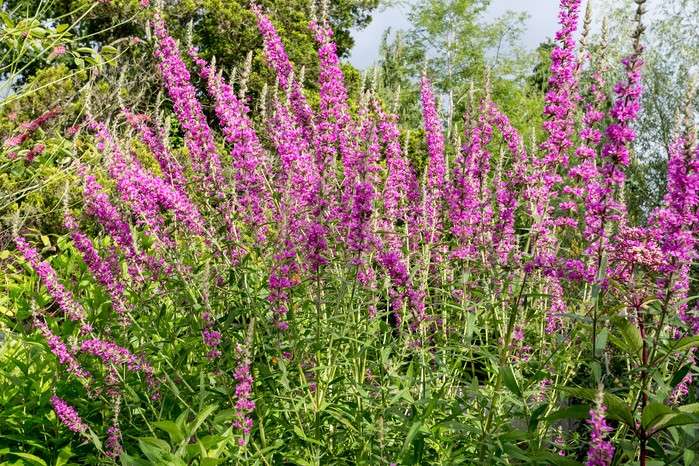
Description
The perennial herb known as purple loosestrife grows to a height of three to ten feet. It stands five feet tall on average. Every July through September, the plant produces spikes of long, purple blooms at the tips of its branches. On a square, occasionally woody stem, the leaves are opposite or whorled.
Habitat
In New Hampshire as well as throughout North America and Canada, purple loosestrife is an issue. The regions most affected by purple loosestrife are southern Canada and the northeastern United States.
Uses
In the form of a decoction or fluid extract, this plant is used for its many health benefits against conditions like diarrhea, chronic intestinal catarrh, hemorrhoids, and eczema. It is also used to treat varicose veins, bleeding gums, hemorrhoids, and eczema.

Plant Care
- Soil
Purple loosestrife grows in a wide variety of soil types. Its ideal pH range is 5.5–8.5, and it thrives on soils that are slightly alkaline or acidic. Purple loosestrife grows best in damp soil, but it can also tolerate water, so look for soil that retains water well and is high in nutrients.
You can plant purple loosestrife alongside a ditch or pond and avoid watering it. In the spring and summer, water it once every one to two days if there isn’t a nearby water source. When the weather cools and the water evaporates gradually, watering two to three times a week in the autumn is acceptable. When planting purple loosestrife in a pot, run your fingers over the top layer of dirt.
- Light
Although it can tolerate some shadow, purple loosestrife grows best in direct sunlight. Less sunshine can cause it to develop more slowly. Give it some shade when the summer sun is strong to keep it from wilting.
- Temperature
Though it prefers warm, moist conditions, purple loosestrife is widely spread in temperate and subtropical countries. It can withstand temperatures as low as -25 °C and has a good tolerance to drought. Purple loosestrife grows well next to a ditch or pond because it likes damp soil. If there’s not enough moisture, it could grow slowly.
- Fertilizer
Fertilizer is required if you want purple loosestrife to bear lovely fuchsia flowers. To guarantee a continuous supply of nutrients, you can apply base fertilizer to the soil prior to planting. During the spring and summer growing seasons, apply water-soluble fertilizer every two weeks.
Table





